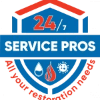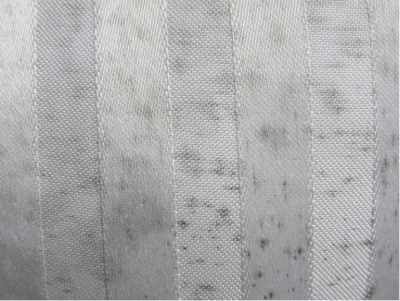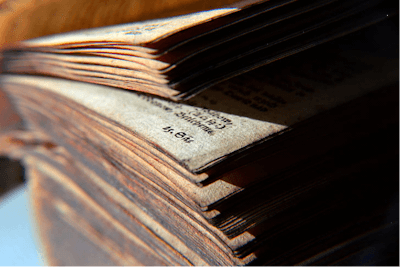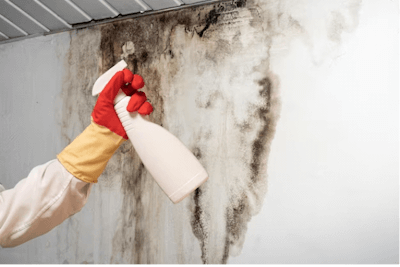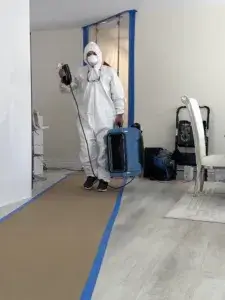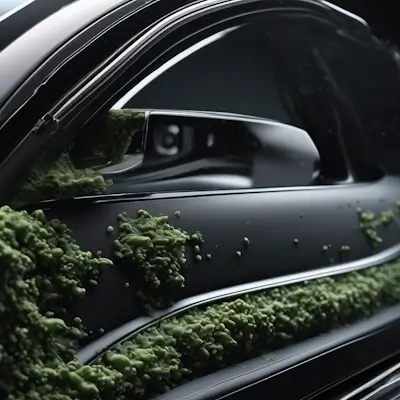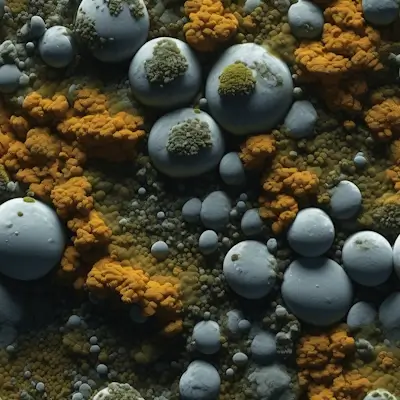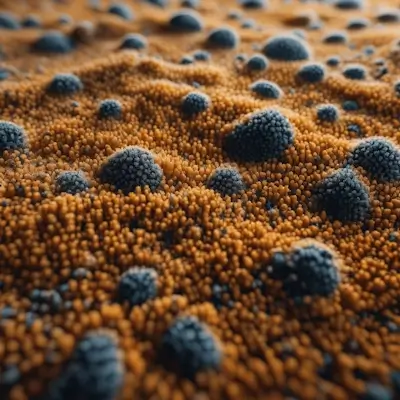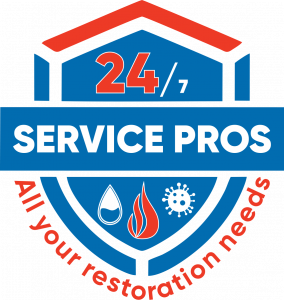Yes, sunlight is the most effective and natural way to kill mold. When exposed to sunlight, the DNA of mold spores gets damaged. This way, sunlight kills mold cells and stops it from reproducing.
If you live in climates with high humidity, you have to be extra careful with mildew. Sunlight might not be able to completely kill the mold if there’s humidity in the air. However, climates with low humidity are always ideal for killing mold with direct sunlight exposure.
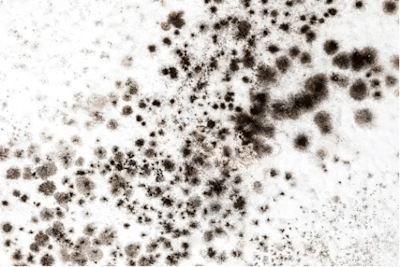
Exposing Mold to Sunlight
Mold thrives in damp and dark places with poor ventilation. Bathrooms, kitchen cabinets, damp closets, walls and floors covered with furniture are ideal places for mold to grow.
There’s one thing common among these spots, lack of sunlight. Mold grows and reproduces when it gets moisture, oxygen, and organic materials to feed on.
How does direct sunlight kill mold?
Sunlight evaporates the moisture and cuts off mold’s oxygen intake. The UV rays in the sun disrupt the DNA sequence of the mold spores, eventually killing it. The heat from the sunlight also helps affected objects to dry out completely. This way, there’s very little chance for mold to grow back in the spot.
How quickly does sunlight kill mold?
The time it takes sunlight to kill mold depends on the type of material that’s affected. However, most mold types can be destroyed by sunlight in one to two hours. Materials such as paper and cloth will usually take one hour to hours under direct sunlight. Change sides of the damaged objects for effective mold removal.
Sun Exposure to Tougher Object
If you want to kill mold on wood or leather, it would take anywhere from 3-6 hours. Thicker objects allow mold to penetrate deeper. If it’s not left in the sun for longer times, the surface mold will die but under the surface it will survive.
Does sunlight kill mold spores?
Mold’s survival without moisture is impossible. If it does not get enough moisture, the spores will die eventually.
Sunlight kills mold spores in three ways:
- Sunlight damages the hyphae (cells that help with nutrient absorption) of the mold. This prevents mold growth by stopping its food supply. As a result, the spores can no longer reproduce.
- Sunlight evaporates moisture from the objects and mold spores need it for reproduction. If the mold damaged object is completely dry, the spores will die.
- UV rays that emitted from the sun damage the DNA of mold spores. When the DNA is damaged, it cannot reproduce and eventually dies.
Killing Mold Growth of Different Materials
If you see mold growing on fabric, paper, wood, or any other object, place it under direct sunlight. With air, light and UV rays from the sun, mold will not spread to other objects in the house.
Does sunlight kill mold on leather?
Sunlight can kill mold on almost any surface, as long as the object is fully exposed to the sun for a few hours. Simply take the mold-damaged leather outside, brush off it with a soft brush, wipe it off with a cloth, and put the leather under direct sunlight.
If you want to speed up the process, wipe the leather object with borax or vinegar soaked cloth. After the solution has dried out, put your leather under direct sunlight for 3 hours. Change sides after 1 to 1/12 hour. Vinegar and borax will crystallize and attach itself to mold, preventing it from growing. The UV rays from the sun will damage the mold’s cells and heat will take away moisture.
Does sunlight kill mold on fabric?
Just like any other object, sunlight can easily kill mold on fabric. However, it can also damage delicate fabrics and fade the colors. If your clothes are sturdy and do not get damaged by direct sunlight, there’s no harm in exposing them to the sun for 1 – 2 hours. If it’s summer time, one hour will be sufficient. If it’s winter time, leave the clothes under sunlight for 2 – 3 hours.
For delicate fabrics, here are a few tips on how to minimize the damage to your clothes while killing mold under direct sunlight:
- Take a soft brush and clean the old affected area of your clothes.
- Soak the fabric in vinegar distilled with water for 60-70 minutes.
- Take a detergent and rub it onto the fabric and then rinse.
- Apply some fabric conditioner to the damaged clothes and put them out in the sun to dry out.
- Once your clothes are completely dry, leave them in dry outdoor air, under the shade, for another hour.
By following the steps given above, you can kill mold easily without damaging your clothes.
Does sunlight kill mold on books?
Another way of getting rid of the mold on the books is to place them under the sun. Make sure they get direct sunlight throughout the time they’re in the sun. Usually, books don’t get damaged under the sun, but longer exposure can lead to dimming. About one hour of sunlight is sufficient for mold on books.
If the books are damp, you can put wax paper or sprinkle cornstarch between the pages to speed up the drying process. The cornstarch absorbs the moisture the book dry. Once the book is dry, make sure to brush off the mold with light strokes.
Does sunlight kill black mold?
It is very well known that the sunlight dries up black mold and that’s solely because of the ultraviolet rays emitted by the sun. UV-C is one of the three types of UV radiations which is responsible for black mold removal. That is why it is one of the most effective ways of getting rid of the black mold and that too without using any sort of harmful chemicals.
Does indirect sunlight kill mold
The sunlight is one of the most effective ways for killing mold. But, at times the area which requires to be exposed to the sunlight for killing the mold is not directly facing the sunlight. So, for such areas or places UV lamps or air purifiers with UV lights may be used to eliminate mold.
Does radiation from UV lamps kill mold?
UV lamps are a great alternative to sunlight. They act similar to sunlight by destroying the DNA of mold spores. UV lamps and lights are ideal for killing indoor mold. The Ultraviolet radiation of the UV lamps contains germicidal properties, making them ideal for killing mold, bacteria, and viruses.
Mold on walls, floors, cabinets, and other corners of the house that cannot be exposed to sunlight, are often the hotspots for mildew growth. Since these areas don’t get proper ventilation or sunlight, You can use UV lamps to kill and prevent mold growth. Regular use of UV lamps in the house can prevent allergies and respiratory illnesses caused by mold hidden under floor beds and behind walls.
Other Ways to Kill Mold
Apart from sunlight, there are several other ways to kill mold using chemicals and household materials:
Vinegar
Objects that cannot be placed under the sun can be treated with vinegar for killing mold. Dilute vinegar with water and apply to the mold affected area. Use fans to dry out the objects and later on run dehumidifiers to kill any lingering moisture.
Hydrogen Peroxide
Hydrogen peroxide can also be used to kill mold on indoor objects, such as furniture, walls, pipes, tiles, etc. Dilute hydrogen peroxide with 4 parts water to avoid damaging the surface. Additionally, it should not be used on leather, polished wood, or vinyl sheets.
Borax
You can use borax for clothes, leather, and wooden materials. Borax is available in both liquid and powder forms. Powder borax will need to be mixed with water. Apply this solution, leave it for an hour and clean up with a clean cloth. Dry out the surface completely using a fan and dehumidifier.
Safety Considerations
Before dealing with mold yourself, make sure you have taken all safety precautions. If not, you can harm yourself while killing the mold. Avoid inhaling mold while brushing it off. Be sure not to transfer it to your clothes or any other objects. Additionally, get the following safety equipment:
- Mold spores are lightweight and can spread in the air rapidly. Use a mask so that you don’t inhale any spores accidentally.
- Wear gloves to protect your skin from coming in direct contact with your skin.
- Wear goggles so that the spores don’t get into your eyes.
- Use a spare dress or a coverall to protect your clothes from the mold you’re trying to get rid of.
Call Mold Removal Specialists
Dealing with mold poses a lot of health risks. It could cause infection in the eyes, throat or skin. If you’re not careful, you can accidentally infect unaffected objects and areas with mold. Additionally, if there’s mold on an object in your house, there’s a good chance that it has alo infested the hidden areas of your house.
Call 24/7 Service Pros for mold inspection and removal. Not only will the team help you get rid of mold, they will also make arrangements to prevent mold growth in the future.
Which Areas We Serve in South Florida?
- Hollywood
- Davie
- Miami Beach
- Weston
- Hallandale Beach
- North Miami Beach
- Sunrise
- Tamarac
- Coconut Creek
- Fort Lauderdale
- Miami
- Boca Raton
- Hialeah
- Margate
- Pembrock Pines
- Dania Beach
- Lauderhill
- Delray Beach
- Pompano Beach
- Deerfield Beach
- Coral Springs
- Plantation
- Doral
- Aventura
- Miramar
- Sunny Isles Beach
